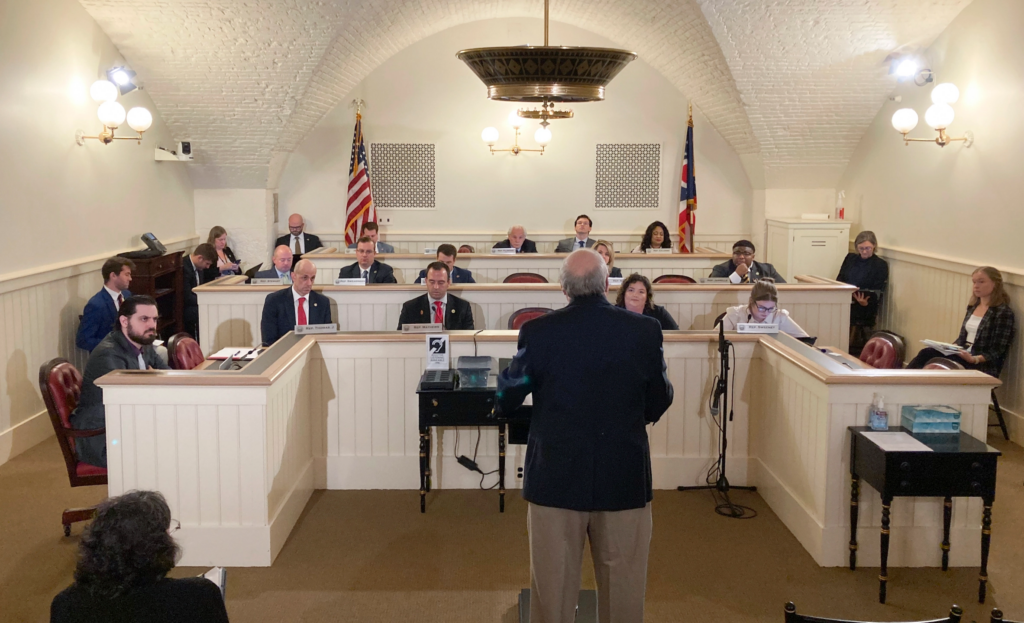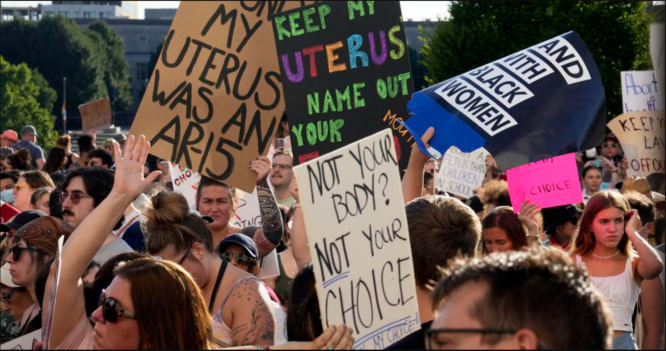This week, the politically divided Ohio House must act on a Republican-led proposal to make it tougher to modify the state constitution.
Republican Secretary of State Frank LaRose, the state’s elections leader, set Wednesday as the deadline for lawmakers to pass a related ballot question on Aug. 8. However, jittery GOP backers might blow beyond the deadline without proponents relenting.
Fairness Project, a Washington-based nonprofit that promotes ballot initiatives, says Republican moves to curtail direct democracy in Missouri, North Dakota, and Mississippi preceded the clash.
Ohio Right to Life is leading a pressure campaign of strong lobbying and attack commercials
The future of abortion access, marijuana legalization, the minimum wage, Ohio’s electoral map-making system, and vaccination requirements may be at risk. All have growing constitutional amendment efforts.
The House is expected to vote on a measure to require 60% of Ohio voters to approve all constitutional amendments. Ironically, the measure would pass with the same 50%-plus-one simple majority as in 1912.
While a case is pending, Ohio allows abortion up to 20 weeks. Abortion rights organizations are preparing a November ballot initiative to entrench the right to abortion in the state constitution.
GOP lawmakers are pushing for an August special election where voters might limit their powers to circumvent politicians on that and other issues. Its supporters say the supermajority rule will prevent deep-pocketed interest groups from targeting Ohio’s foundational document, but records and other evidence show the drive is to kill the abortion bill. AP VoteCast, a nationwide survey of over 90,000 midterm election voters, shows 59% of Ohio voters support abortion.

The issue’s painful, complicated, and time-consuming debate has exhausted the state’s ruling Republicans. GOP Gov. Mike DeWine even promised to approve an August election bill, even though “it’s inconsistent” with an election measure he signed in January, if lawmakers would only send it to him.
“This just needs to move forward and be over with,”
Even legislative experts struggle to follow the daily gamesmanship. A chair defying his committee? The chair was fired. after one legislator died and another went for a new job after the last election, how many House votes are required to put the 60% question to voters? (Answer: Depends.)
The August special election law included a $20 million decrease to local election board funds. For complex procedural reasons, eliminating the financing might have streamlined the bill’s House floor journey, but it may have left already-stressed local election officials without money for the extra election. After days of negotiations, two committee hearings were canceled and the bill failed.
Legislation may not be needed without money. The House and Senate resolutions putting the 60% issue on the ballot mention the Aug. 8 election. Lawmaker-initiated ballot initiatives skip the governor.

Ohio Right to Life and the Buckeye Firearms Association, two strong anti-abortion and pro-gun rights groups, have linked the convoluted web of connected votes to their election-season scorecards to pass the two initiatives. Voting “no” on either legislation jeopardizes a Republican lawmaker’s “pro-life” and “pro-gun” voting histories. Gun organizations fear a gun control constitutional amendment.
In addition, the newly established Save Our Constitution PAC is launching attack commercials against Republican House Speaker Jason Stephens and other GOP politicians who have opposed the idea. The Columbus Dispatch stated that Illinois millionaire Richard Uihlein, an heir to the Schlitz Brewing Co., gave the political action group $1.1 million. The 60% measure’s proponents have said that “out-of-state special interests” should not access Ohio’s foundational text, thus the gift raised questions among opponents.
The Ohio Libertarian Party, five Republican and Democratic former state attorneys general, and every living Ohio ex-governor oppose increasing the constitutional amendment bar. Last week, hundreds of grassroots voting rights, labor, police, church, civil rights, and community organizations marched outside the Statehouse in a nonpartisan protest. They return Wednesday.
The highest-profile supermajority threshold backer and probable 2024 U.S. Senate candidate, LaRose, thinks Wednesday is the deadline for legislative action. His spokeswoman stated state legal and constitutional procedures will apply to the August 8 election date.
Last week, Republican Senate President Matt Huffman, who favors increasing the threshold and proposed the August election, said he cannot forecast the House. “I don’t know what will happen,” he told reporters.

